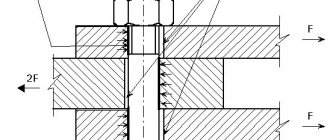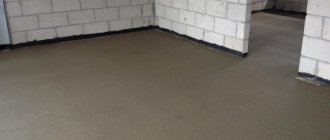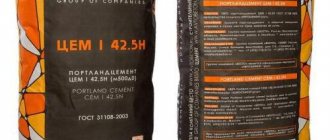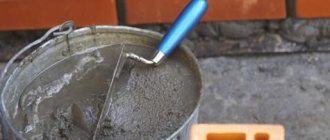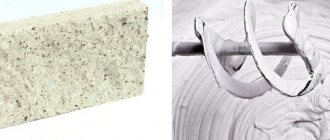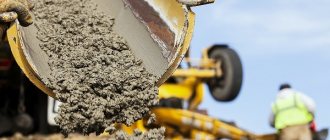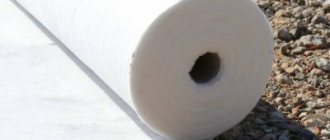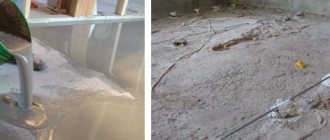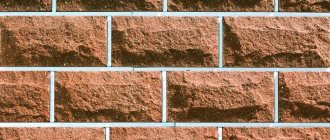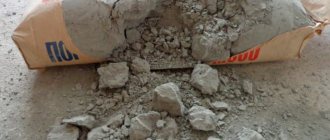After cement material was invented, there was a dramatic revolution in construction technology. Cement began to be considered the basis for the construction of various structures and monolithic elements. It is used to bind solid filler components into a homogeneous concrete mass. As a rule, concrete is used for the construction of foundation structures, preparing a mixture in a certain proportion of sand, crushed stone, water and cement. You need to understand exactly which cement is best for the foundation in order to get a reliable and durable monolith.
How does the brand of mortar depend on the brand of cement material?
Fillers used for concrete give the solution certain properties and additional qualities.
In the classic version, concrete is composed of crushed stone, cement and sand, when mixing which a certain amount of water is added. The quality of the mixture being prepared depends on the binding component.
Concrete solutions are differentiated by the load forces they can withstand. To determine it, laboratory tests of samples are necessary, according to which the mixture is labeled according to the composition and type of binder. For different types of buildings, certain concrete compositions are used, taking into account the required level of strength.
There is no definite answer as to what brand of cement is needed to fill the foundation. The fact is that the quality of the binder is determined by numerous factors.
Most often, builders use M400 or M500 cement. As a rule, cement, sand and crushed stone are taken in a ratio of 1 to 3 to 5. The quality characteristics and brand of cement directly affect the quantity. For example, a higher class is added to the mixture being prepared in a smaller volume.
Additives to concrete
In addition to the strength of the foundation itself, the concrete mixture must provide other important characteristics: plasticity, water absorption, frost resistance. If the mortar is used as a masonry mortar, the workability and survivability of the mixture must be ensured. The beneficial qualities of the concrete mass are controlled at the mixing stage through the use of chemical additives.
Mixing concrete.
The most common modifiers:
- Superplasticizers - reduce water consumption for mixing, increase strength, reduce shrinkage and the appearance of cracks. The frost resistance of concrete and its water resistance increases.
- Antifreeze chemical additives are used when it is necessary to concrete in low temperature conditions. The reagents are effective in temperatures down to -15ºС.
- Self-compacting additives - they allow you to pour the mixture into narrowed spaces of the formwork.
- Additives that accelerate hardening. They are used when strength is needed within a day after laying concrete.
- Set retardants are used to keep the mixture moving longer.
Plasticizers are a universal means for improving the quality of concrete mortar.
How is cement marked?
Not only the operational life of the structure, but also its tensile and bending strength indicators - those types of loads that the concrete strip experiences most of all - depend on the cement used to fill the foundation base. To know what brand of cement is needed for the foundation of a house, it is recommended to understand its differences.
NOT so long ago, a concrete mixture was prepared on the basis of one of the binding components - PC (Portland cement) or ShPC (slag Portland cement). The main difference was the powder composition and strength characteristics. The grades of cement for the foundation complied with current GOST standards.
In addition to the name, the brand of cement material for constructing foundations and other works contains a designation with numbers that indicate the maximum strength under load until complete destruction.
Now let's see what grades of cement there are, how the marking is applied and what its meaning is.
According to the old designation system, several brands were distinguished:
- M 300 - withstands loads of up to three hundred kilograms per square centimeter of surface;
- M 400 – corresponds to a pressure of 400 kg;
- M 500 - withstands impacts of at least five hundred kilograms per unit of area;
- M 600 - carries a load of six hundred kilograms.
The characteristics given here are not able to give unambiguous advice on what brand of cement to use for constructing the foundation of a house, and what to use when building lighter structures. Naturally, for large structures it is necessary to take material with a greater load. But you can prepare a concrete solution with the required characteristics by changing the amount of cement composition of a lower grade, increasing its quantity.
When determining which cement material is best for the foundation of a house, it is recommended to pay attention to the presence of mineral additives in it and their quantity.
This criterion is present in the labeling of the material, and its presence is indicated by the corresponding letters and numbers D0 or D20. Before making the final choice in cement, it is recommended to clarify how mineral components influence the quality of the binder. For example, D0 does not contain any components, and the solution is of the highest quality. But the brand with the designation D20 contains up to twenty percent of impurities, which reduce not only strength, but also cost. When choosing a cement material, for example, to construct a fence foundation, you can use a powder with a lower strength index, thereby reducing the overall cost of construction work.
When deciding which material is best to use for pouring a strip foundation, you should study the remaining characteristics of the component indicated in the labeling. The most common designations are:
- PL – cement contains plasticizer additives. This type of foundation material is used when the region experiences low temperatures in winter;
- VRC - this abbreviation denotes the moisture resistance of the mixture and the increase in volume during hardening. If you are in doubt which cement is best for a foundation in a swampy area, then you will not find another option;
- B - such material requires less time before final hardening. If you have a choice about what to use for the foundation of a house, when the time frame for work is limited, choose this particular cement material;
- SS – sulfate-resistant cement. It is rarely used by private developers, because its main purpose is considered to be concreting hydraulic structures. When plugging oil and gas wells, plugging cement is used - a mixture of clinker powder, gypsum and other components;
- N – cement with this marking has undergone additional rationing using clinker. This additive ensures high strength of the material;
- BC – “white cement”. A distinctive feature is that it becomes lighter after hardening. It is rarely used, mainly for finishing work.
Reinforcement
Before pouring concrete into the formwork for a strip foundation, a reinforcing frame is installed. The work is carried out based on the drawing, which shows the layout of the elements, the diameter of the rods and the distance between the reinforcement. It is impossible to draw up such a drawing on your own without the appropriate knowledge; it must be done by a specialist.
The reinforcement is fastened using a special knitting wire. A welding machine cannot be used to fix frame elements - such a connection reduces the strength of the structure.
In places where the rods are horizontally connected, when increasing the length, the elements are overlapped, the length of which is 20 times the diameter of the reinforcement used (for any value, the length should not be less than 25 cm). In corner areas, in addition to the wire, additional rods are mounted to increase the strength of the structure.
To maintain the protective layer, it is necessary to use clamps.
Assessment of the quality of cement raw materials
A low-quality material will not make a good concrete foundation, and you should learn to identify its signs by appearance.
When choosing which cement is best for the foundation of a house, garage or for the foundation of a bathhouse, you should pay attention to a number of indicators:
- date of production - the quality characteristics of cement gradually decrease during storage of the material. If the cement was made six months ago, then it is not recommended to use it for serious objects;
- consistency - ideal powder state - loose, without lumps. This is easy to check - the packaging is touched and turned over;
- packaging material must remain intact and dry. When deciding which cement is better, check the name of the manufacturer and production time. If there is no such information, there is no point in buying the material.
It turns out that it is difficult to choose cement for pouring the foundation. All working conditions of the material, the condition of the soil composition, and the timing of construction should be taken into account.
Which garage foundation to choose?
Let's summarize:
Swampy soil, permafrost or high groundwater level - forget about the inspection hole and basement, choose a slab or pile structure. There is no need for an inspection hole - make a slab or strip shallow foundation. You need a basement - just a strip base. A site with complex terrain - a pile structure with a reinforced concrete grillage is suitable. A lightweight garage made of foam blocks - the best choice would be a concrete monolithic slab with a recess of 40-50 cm. Frame garage - taking into account the soil and water level, 3 main types of foundation are suitable: strip, pile, slab. A small brick motorhome for one car - arrange a reinforced monolithic strip, deepened to 80 cm. Iron garage - pay attention to a concrete monolithic reinforced slab. Alternative materials for the foundation can be used: sleepers, road slabs.
Tags:Garage
What to use when building a foundation
We have to remember that the soil composition may differ in certain characteristics. For dry soil, it is better to prepare a solution from cement grade 500 D0, and you will get a mixture of grade M 350.
You can use the help of experienced builders who will tell you which brand of cement is best to use in a particular case, in what proportions to mix, and what sand dispersion to choose.
As a rule, M 400 and PC 400 with a D20 indicator are used in private construction for the construction of a one-story house and utility room. For such foundations, the maximum load is not the main indicator, and cement of this brand is considered an ideal solution that saves money.
M 400 and PC 400 D0 are almost similar in properties to D20, but do not contain impurities. And if you are building a foundation that must be used in a humid environment and in severe frosts, and do not know which cement is better - with or without additives, use “clean” material.
M 500 and PC 500 D20 are good cement for foundations for large industrial and administrative facilities, high-rise residential buildings. For construction in frosty and humid regions, it is better to use PC 500 D0.
Selection and mixing of concrete solution
The grade of concrete and the grade of cement have similar meanings, but are completely different concepts. The number of the cement grade indicates the strength of the cement mortar.
It is important to reinforce the foundation structure to resist lateral loads, and to lay crushed stone or sand under the foundation. In theory, sand for foundation concrete is required from sea sand, but it can be replaced with washed or alluvial quarry sand, which has its advantages over sea sand in the form of sand grains (angular shape) providing high adhesion
It is better not to use sand with a high content of clay and other foreign inclusions or wash it yourself
In theory, sand for foundation concrete requires sea sand, but it can be replaced with washed or alluvial quarry sand, which has its advantages over sea sand in the form of the shape of sand grains (angular shape) providing high adhesion. It is better not to use sand with a high content of clay and other foreign inclusions or wash it yourself.
Any tap water will do; there are no special requirements for it.
It is important to maintain the proportions of 2:1 Two parts cement to one part water
A concrete mixer is best suited for mixing, but you can get by with improvised means. Sand, crushed stone and cement are mixed mechanically with the gradual addition of water until a homogeneous mass is formed. Try not to overwater, it will wash the cement out of the mixture.
We evaluate the composition of cement raw materials
To check the composition and practical quality of cement, mineral water containing bicarbonate, without gases, is used. Cement powder is mixed with this water until it forms a dough. A flatbread is prepared, thick in the center and thin at the edges. If high-quality material that does not contain additives was used to make cement, the cake hardens in ten to fifteen minutes, and it is quite difficult to destroy it (especially in the center).
At the moment of hardening, the cake heats up and changes color from gray to bluish-green. This effect does not occur with every cement material and depends on the specific manufacturer.
If the cake remains soft for half an hour, the cement does not have good binding qualities; it contains impurities, about which you will not find any information on the packaging material. As follows from the reviews of developers, such material is not suitable for foundations, because it cracks during the hardening process.
Types of foundation for low-rise buildings
Selecting a foundation is the very first task that must be solved when starting construction. A mistake in this matter will lead to a short service life, poor strength and unnecessary costs. Therefore, the first thing you need to do is choose the type of support, taking into account the parameters below.
- How deep does the groundwater lie? If they are too close, they can cause flooding and uneven ground settlement.
- Soil composition and density. It is not recommended to lay the same type of foundation on mobile and dense soils.
- Freezing depth. Without taking this parameter into account, you can get cracks not only in the base of the building, but also in the walls and ceilings.
For low-rise construction, one of four types of foundations is used:
- Tape - a continuous structure encircling the perimeter of the future building. It is possible to pour into formwork directly at the installation site or assemble from previously created blocks.
- Slab. It is laid in layers, each of them has a separate role. The top layer is a reinforced concrete slab.
- Pile-grillage. It is based on pillars buried in the ground, connected at the top by a lintel (grillage), which allows the load to be properly distributed.
- Pile. It is assembled from supports installed throughout the entire area of the building or under areas with the heaviest load: corners, walls, ceilings and partitions.
The foundation project is developed taking into account the described factors, materials used during construction, and the final dimensions of the future structure.
Foundations for wooden houses
Houses made of wood have less weight than brick and concrete counterparts, but more than frame buildings. The best option for wooden buildings is a strip foundation on a small depth or a pile-grillage foundation.
If you install the first type, then it becomes possible to create a basement. It will require low costs and is quite stable. For long service life, it is worth remembering hydro- and thermal insulation and a sand base of sufficient size and thickness.
The use of a pile-grillage foundation requires preliminary preparation of holes (it is advisable to dig them at the level of soil freezing) and connection by isthmuses. Afterwards, the holes and ditches are filled with concrete mixture.
Checking cement for quality and compliance with building codes
Some manufacturers do not clearly record the production date of their product, but situations arise when craftsmen buy cement in bulk and simply package it in their own containers. In such cases, you must first check it for hardness, and you must remember that in the corners of the bag the cement always hardens faster than in the center.
How to choose cement? The contents of the bag should be gray in color with a characteristic cutting odor. Fresh cement is soft to the touch, flowable and seeps between your fingers. Moreover, if you squeeze it in your fist, you get a lump that quickly crumbles and does not cake.
But even if you open the bag and find small lumps there, it is not fatal. You need to check how they crumble. If from the slightest contact, then the cement is simply not quite fresh. But it can be used. But if the lumps are already strong, have formed stone, and are difficult to grind, then you cannot buy cement - it is no longer suitable for construction.
What factors influence the choice of composition brand?
Unfortunately, there are no universal recipes; price is not always a fundamental factor. After all, even expensive formulations have their own recommendations and restrictions on use.
Scheme of formwork option for strip foundation.
Dependence on the weight of the building
If you want to build a house with your own hands, but you do not have a ready-made project with prescribed recommendations, then, first of all, you should pay attention to the total weight of the building. This is the first indicator from which one starts when selecting a brand of composition.
Here are some general recommendations:
- A prefabricated panel house with a height of 2 floors, in most of our country, will comfortably stand on a reinforced concrete foundation poured with the M200 grade.
- For 2 - 3 storey log buildings, as well as for houses built from foam concrete, gas silicate blocks or other cellular concrete, grades M200 - M300 are recommended.
- For heavy, permanent buildings built from brick, solid concrete structures or other heavy materials, it is recommended to use a grade of M300 and higher.
Reinforced blank for pouring the structure.
Soil characteristics
Much depends on the geology of the soil in a given area, its composition and how deep the groundwater lies.
Sandstones and rocks are considered the most favorable. They can be poured with concrete M200 - M250.
Clay soils and loams pose quite a big problem. The fact is that these soils are susceptible to heaving when they freeze. That is, they do not freeze evenly and are capable of squeezing out the shallowly buried strip foundation in some places, which leads to general deformation. In this case, you can proceed in two ways.
- First, deepen the structure to a level exceeding the average rate of general soil freezing in a given region.
- Secondly, you can build a strip-column, well-reinforced foundation. This is when concrete support pillars are poured to a considerable depth at key points, which stabilize the entire structure.
Diagram of a strip-column structure.
Waterproofing on the foundation.
Common grades of concrete
When producing different grades of concrete for foundations, M 400 cement is most often used, but in different proportions.
- M100 - used as an underlayment when building roads, laying deep foundations or pouring floor screeds.
- M200 – suitable for shallow foundations based on stable soils. It is used to fill basements and various open areas.
- M250 – used for casting fences, various kinds of stairs and strip-column structures.
- M300 is considered the most popular brand for pouring foundations. It can be successfully poured into the vast majority of known foundation structures and can be used in damp environments.
- M400 - used for pouring underwater structures, bridges and other permanent structures. Used for building houses in extreme conditions.
- M500 - used for pouring vertical structures, repairing roads and structures, or as an additive.
Detailed table of proportions.
What else is worth paying attention to
There is also a marking characterizing the strength class of the hardened composition. It is designated by the letter “B”, characterizes the compressive strength margin and is measured in megapascals.
Classification of concrete for cement M500.
The level of strength and grade of concrete are related indicators. According to GOST, each grade of concrete corresponds to its own level of concrete strength, here are some basic indicators:
- B7.5 corresponds to M100
- B15 corresponds to M200
- B20 corresponds to M250
- B22.5 corresponds to M300
- B25, B27.5 correspond to M350
- B30 corresponds to M400
- B35 corresponds to M450
For our country, the frost resistance indicator is also relevant; it is marked with the letter “F” and a certain number after it. The number indicates how many times the structure can freeze
For a larger area of the country, F200 is sufficient; the more thaws in winter, the higher this figure. It is also worth paying attention to the indicator of resistance to high humidity. It is indicated by the letter “W” and the number after it.
Technical characteristics according to GOST.
Legend
The following cement brand designations are distinguished:
- the type of cement is designated by the first letters, for example, Portland cement - PC;
- cement grade, which is determined by the compressive strength - from M300 to M700;
- number of additives included. When adding is prohibited - DO, up to 5% of the total mass - D5, from 5 to 20% - D20;
- depending on the defining characteristics: for example, fast-hardening - B, hydrophobized - GF.
The properties of concrete deteriorate during long-term storage. As a result of the effect of moisture on cement, its grade decreases. In one month, 10% of strength is lost. Based on this, strength must be taken into account when drawing up the proportions of cement mortar.
Return to contents
